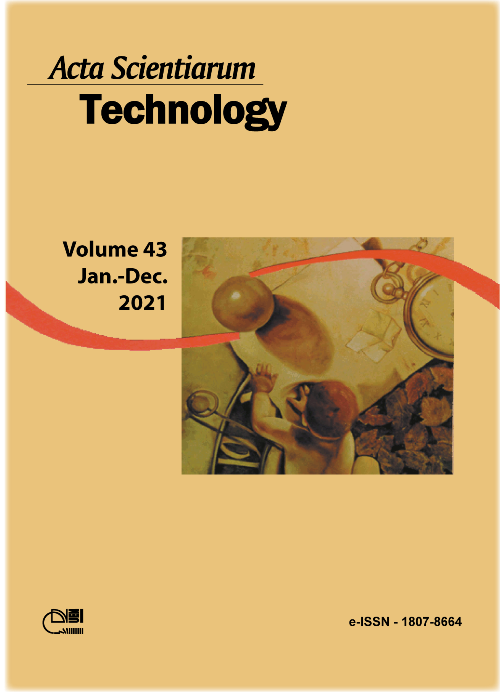In vitro effects of an Acanthophora muscoides (Ceramiales, Rhodophyta) native and modified sulfated polysaccharide fraction on thrombin generation
DOI:
https://doi.org/10.4025/actascitechnol.v43i1.49082Palavras-chave:
anionic polymers; chemical modification; plasma systems; thrombosis.Resumo
The structural complexity of the agaran type-sulfated polysaccharides (SPs) found in Acanthophora muscoides limits its investigation as anticoagulant alternative to heparin which induces clot complications. This study was extended to evaluate the properties of a SPs fraction and its alkali/desulfated derivatives on an intrinsic pathway-induced thrombin generation (TG) continuous model using 60-fold diluted normal or serpins-depleted human plasma. 0.75 M NaCl-eluted SPs fraction by DEAE-cellulose chromatography containing sulfate (35.20%), total sugars (55.97%) and no proteins showed charge homogeneity and heterogeneous molecular weight by agarose/polyacrylamide gel electrophoresis, respectively, using sequential staining with toluidine blue and Stains-All. Fourier Transform Infrared spectroscopy confirmed agaran-structure. Intact fraction poorly acted on the activated partial thromboplastin time (3.10 IU) than heparin (193 IU), but there was a preponderance of the serpin-independent effect than serpin-dependent one in TG assay comparing both systems was continually recorded. Heparin abolished plasma TG, but was inactive in depleted human plasma. While desulfated derivative of the respective fraction anticipated and induced thrombin formation vs. untreated plasma. The results suggested that sulfated sugars residues in the sacharide units of the polymer appear to be important to attenuate TG in vitro.
Downloads
Downloads
Publicado
Como Citar
Edição
Seção
Licença
DECLARAÇíO DE ORIGINALIDADE E DIREITOS AUTORAIS
Declaro que o presente artigo é original, não tendo sido submetido í publicação em qualquer outro periódico nacional ou internacional, quer seja em parte ou em sua totalidade.
Os direitos autorais pertencem exclusivamente aos autores. Os direitos de licenciamento utilizados pelo periódico é a licença Creative Commons Attribution 4.0 (CC BY 4.0): são permitidos o compartilhamento (cópia e distribuição do material em qualqer meio ou formato) e adaptação (remix, transformação e criação de material a partir do conteúdo assim licenciado para quaisquer fins, inclusive comerciais.
Recomenda-se a leitura desse link para maiores informações sobre o tema: fornecimento de créditos e referências de forma correta, entre outros detalhes cruciais para uso adequado do material licenciado.



















